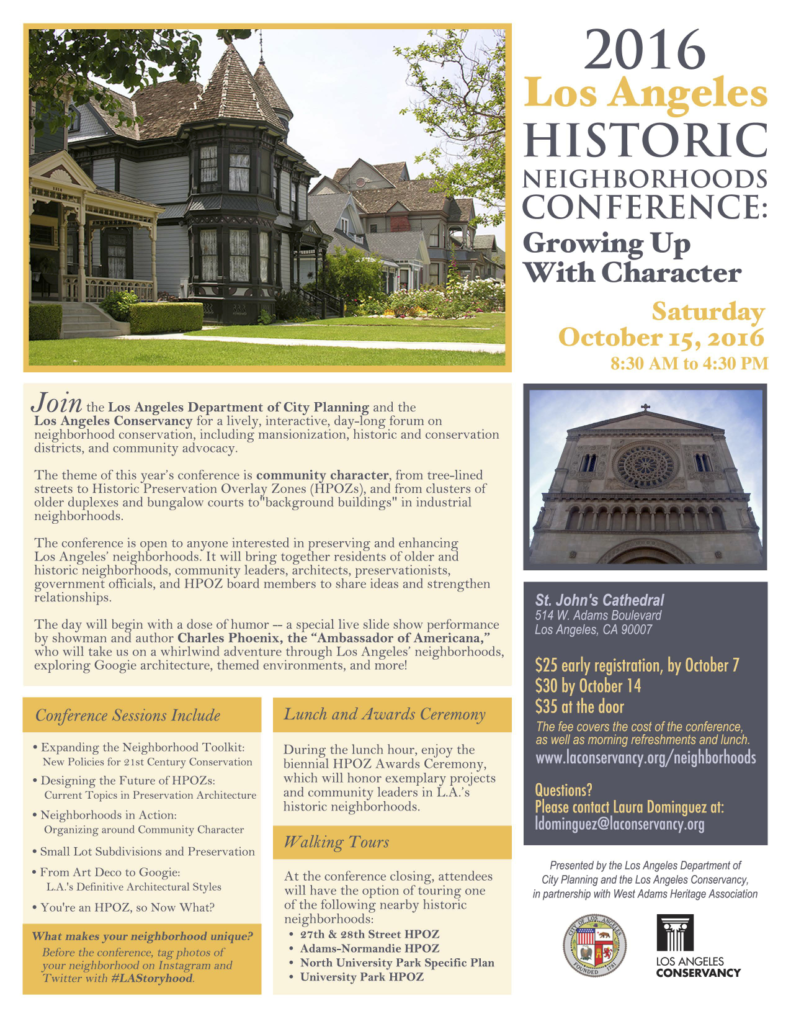 The Department of City Planning and the Los Angeles Conservancy invite all neighborhood council leaders and stakeholders to sign up today for the L.A. Historic Neighborhoods Conference, on Saturday, October 15, 8:30 to 4:30 p.m. at St. John’s Cathedral, 514 W. Adams Blvd. (at Figueroa), City Historic-Cultural Monument #516. To register, visit: https://www.laconserva
The Department of City Planning and the Los Angeles Conservancy invite all neighborhood council leaders and stakeholders to sign up today for the L.A. Historic Neighborhoods Conference, on Saturday, October 15, 8:30 to 4:30 p.m. at St. John’s Cathedral, 514 W. Adams Blvd. (at Figueroa), City Historic-Cultural Monument #516. To register, visit: https://www.laconserva
The registration fee (only $25 if you register by October 6, $30 by October 14, or $35 at the door) covers all conference activities, including morning refreshments, lunch, and your choice of walking tours.
Here are six great reasons to attend this year’s conference:
3) HPOZ Awards Ceremony: As part of our lunch program, we’ll be honoring the project teams, property owners, and community leaders responsible for exemplary projects in Los Angeles’ Historic Preservation Overlay Zones (HPOZs), or historic districts.
4) The Venue: Experience the historic 1925 St. John’s Cathedral, one of Los Angeles’ most monumental examples of Romanesque Revival architecture, with a grand array of golden-hued mosaics and Italian marble columns and altar.
5) The Sessions: This year’s discussions promise to be lively and informative, with a theme of “community character.” There’s something for everyone — from sessions on neighborhood conservation tools and re:code LA to “You’re an HPOZ, Now What?,” focused on strategies for neighborhood engagement and building community support. We’ll also feature half-hour “power sessions” on topics such as architectural styles and small-lot subdivisions.
6) Neighborhood Walking Tours: In the afternoon, you’ll have a chance to see some of Los Angeles’ most significant historic neighborhoods and experience first-hand the architecture, the community and the “lessons learned” from your choice of four historic districts near the conference venue, through walking tours of the University Park HPOZ, North University Park Specific Plan Area, Adams-Normandie HPOZ, and the proposed 27th and 28th Street HPOZ.
Please help us spread the word to other interested organizations in your area, including neighborhood preservation organizations, homeowners/residents associations, and other non-profit organizations.